I learnt this week the sad news of the death of Barry Dawson, Emeritus Professor in the School of Geosciences at the University of Edinburgh. I had the great fortune to accompany Barry into the field in 1988, while I was still studying for a PhD, and had the pleasure of spending many enjoyable moments with him subsequently, whether in the field, at meetings, or just in passing. This seems like an appropriate time to reflect briefly on our first meeting.
In the summer of 1988, Barry heard that a volcano that he had first climbed in about 1960 was erupting again, and he was eager to to put together a team for a field visit. This was no ordinary volcano, though: Oldoinyo Lengai, in the northern part of the Tanzanian Rift Valley, is the only known active volcano to erupt lavas of molten sodium carbonate (or carbonatite). With emergency funding in place from the Royal Society, Barry and I, along with Harry Pinkerton and Gill Norton, set off for Tanzania. This was my first visit both to Africa, and to an erupting volcano. I remember Barry’s delight in regaling us with his reminiscences of his life in Tanzania as a Geologist for the (then) Tanganyika Geological Survey in the early 1960’s. This job had seen him map the ‘Monduli’ region of Tanzania, and had first taken him to the summit of this enigmatic volcano – and his first paper in Nature.
We trundled across the rift valley in a ten-tonne truck, and set up camp at the base of the volcano. This was luxurious field work, with a team of guides, cooks and porters from an outfit, which is still going, called Dorobo Safaris.
Getting to the top was a challenge, even with a safari team to carry most of the equipment, but it was certainly worth it: to see, first, sunrise over Kilimanjaro, and then to arrive at the rim of the active crater, shrouded in mist but with the full cacophony of an eruption in progress coming up from somewhere beneath us. Eventually, the clouds lifted, and we were treated to a display from the coolest (literally) and most fluid lavas ever seen on Earth. The next few days are a blur, but included Barry plane-tabling to produce a map of the active vents of the summit crater; impromptu tutorials on the alkaline igneous rocks (of which Oldoinyo Lengai is built), and many hours watching the astonishing eruptive display of this bizarre volcano. And once it was too dark to stay in the field, we would retreat back to the camp site which, in hindsight was perilously located within the main crater, to enjoy a wee dram and a story or two with Barry.
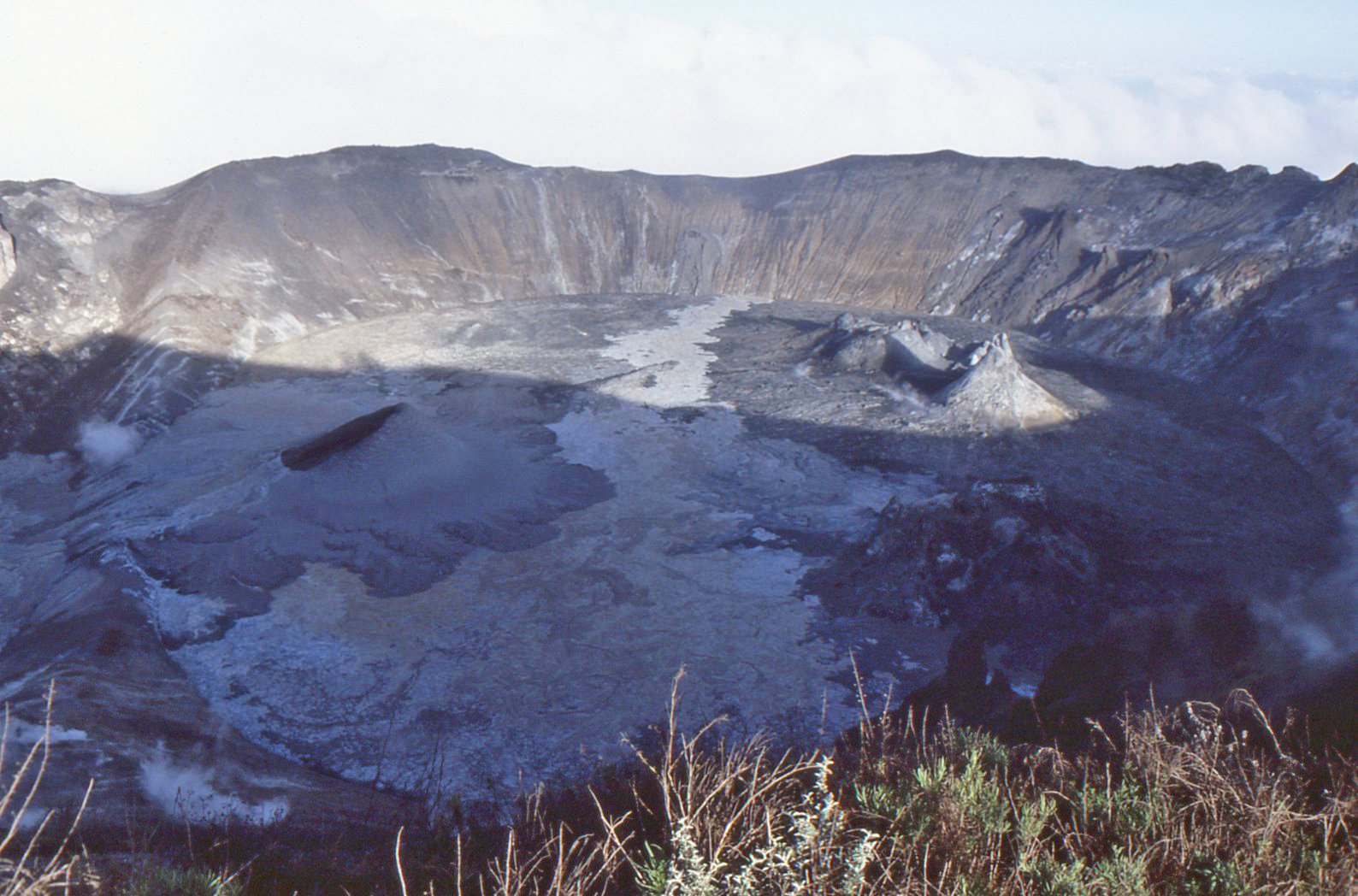
Early morning shadow across the active crater of Oldoinyo Lengai, November 1988.
Five days later, we stumbled and slid our way back down the slopes, and took the dusty track back into Arusha. Arriving at the hotel to find that there was neither running water, nor food, wasn’t the slightest nuisance to Barry, who settled us all down in the bar to quench our thirst with beer.
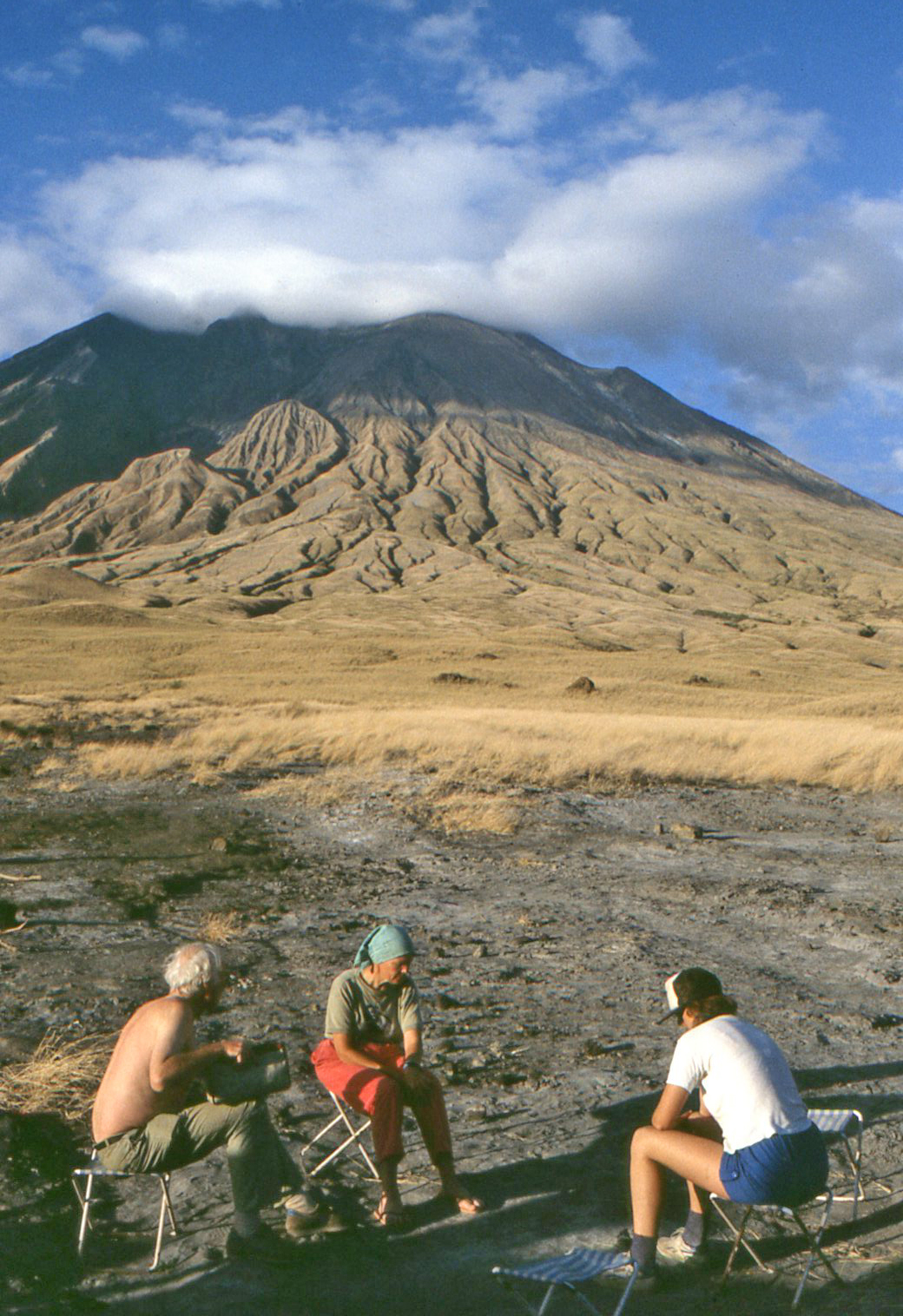
View of Oldoinyo Lengai from base camp, with Barry Dawson, Celia Nyamweru and Gill Norton, November 1988.
Since that first field expedition, our paths crossed on many occasions. Barry was not only delightful company, he was hugely generous with his time, his expertise and his rock collection – a collection which must be one of the most important collections of both rocks from the mantle, as well as the East African Rift. I shall never forget the way he would always begin a conversation with ‘Now, David, let me tell you… ‘; my only regret is that I didn’t have time to go for a beer with him on my last fleeting visit to Edinburgh.
—
Below, I have reproduced the formal citation that I put together for Barry’s nomination for the Collins Medal of the Mineralogical Society, which he was awarded in 2012. This hopefully captures a small snapshot of his academic contributions.
Barry Dawson was a petrologist and mineralogist who devoted his career to further the understanding of igneous rocks. Over the fifty years of a highly productive career, Barry Dawson made a series of lasting contributions to studies of the mineralogy, mineral chemistry, petrology and geochemistry of the parts of the mantle sampled by volcanic rocks; and to the nature of the melts and magmas involved in continental magmatism. His work significantly developed the fields of kimberlite and carbonatite magmatism and improved our understanding of the nature of the subcontinental mantle.
Barry Dawson’s career began with a PhD at the newly formed Centre for African Studies in Leeds (1956-1960). Here, he began his work on kimberlite magmas and their xenoliths, which culminated in the publication twenty years later of the influential monograph ‘Kimberlites and their xenoliths’ (Dawson, 1980). Amongst his major contributions here were his recognition of wet, pegmatitic rock samples from the upper mantle (the Mica-Amphibole-Rutile-Ilmenite-Diopside or MARID suite); and the discovery of diamond in garnet lherzolite nodules (Dawson and Smith, 1975). After completing his PhD, Barry worked for as a geologist for the Tanganyika Geological Survey, where he discovered the erupting sodium carbonate lavas of the volcano of Oldoinyo Lengai – aspects of which he continued to work on ever since. Barry returned to the United Kingdom in 1964, where he was lecturer at St Andrews and later Professor in the Universities of Sheffield (from 1978) and Edinburgh (from 1990). Over the course of his career, Barry published prolifically, and gave his time and samples generously to support the developing careers of his students and other scientists. He was a fount of knowledge on East African magmatism, and in his retirement, Barry completed an important synthesis on this, published in 2008, as a Geological Society of London Memoir titled ‘the Gregory Rift Valley and Recent volcanoes of northern Tanzania’.
Barry’s notable achievements were recognized by a number of awards: he was elected Fellow of the Royal Society of Edinburgh in 1973; was Hallimond Lecturer of the Mineralogical Society in 1980/1, and was awarded the inaugural Norman L Bowen Award of the American Geophysical Union in 1987 for his outstanding contributions to volcanology, geochemistry and petrology. In 2012, he was awarded the Collins Medal of the Mineralogical Society for his career-long contributions to the field.
Full curriculum vitae

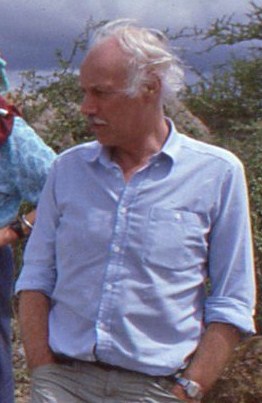
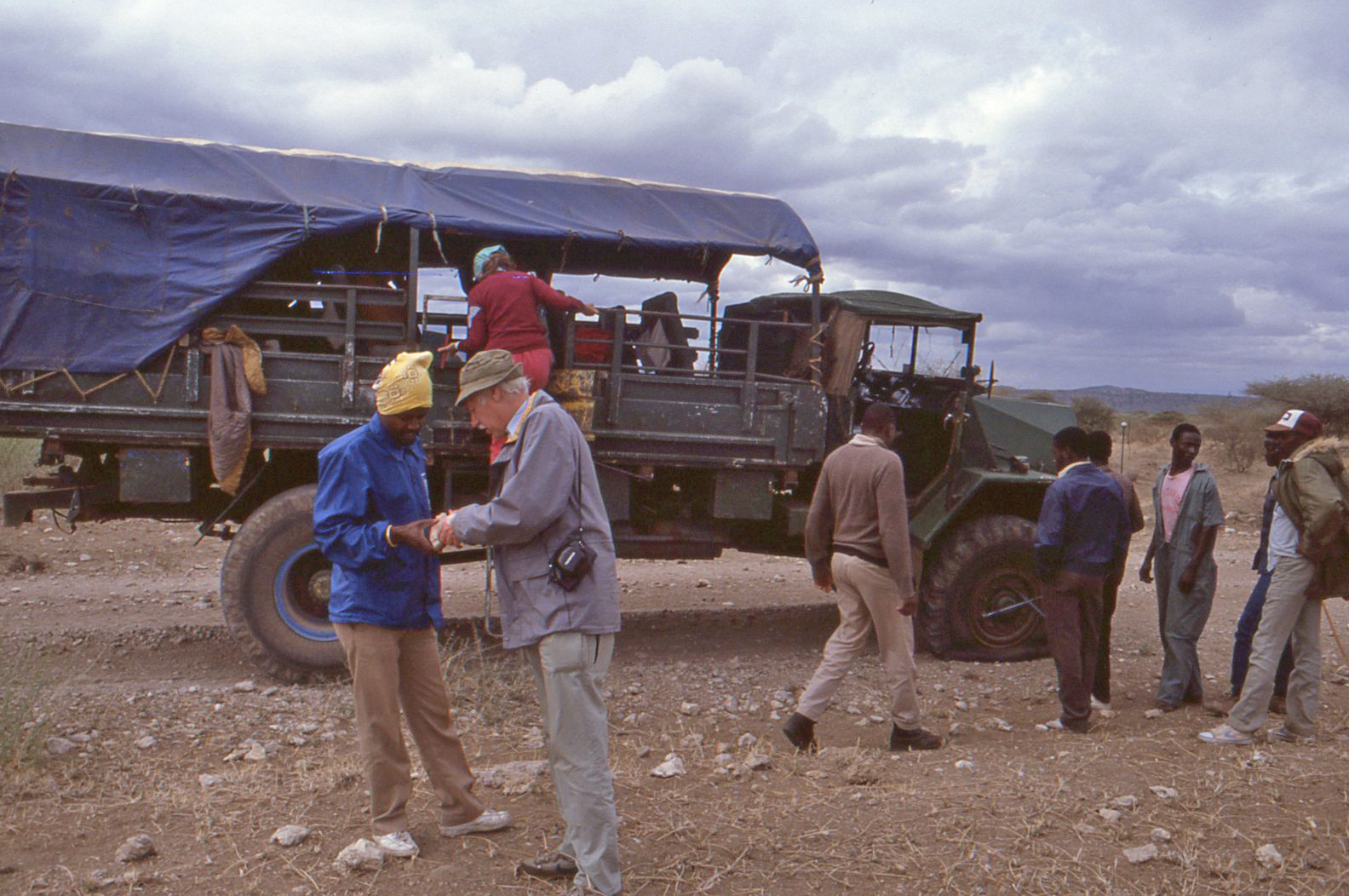
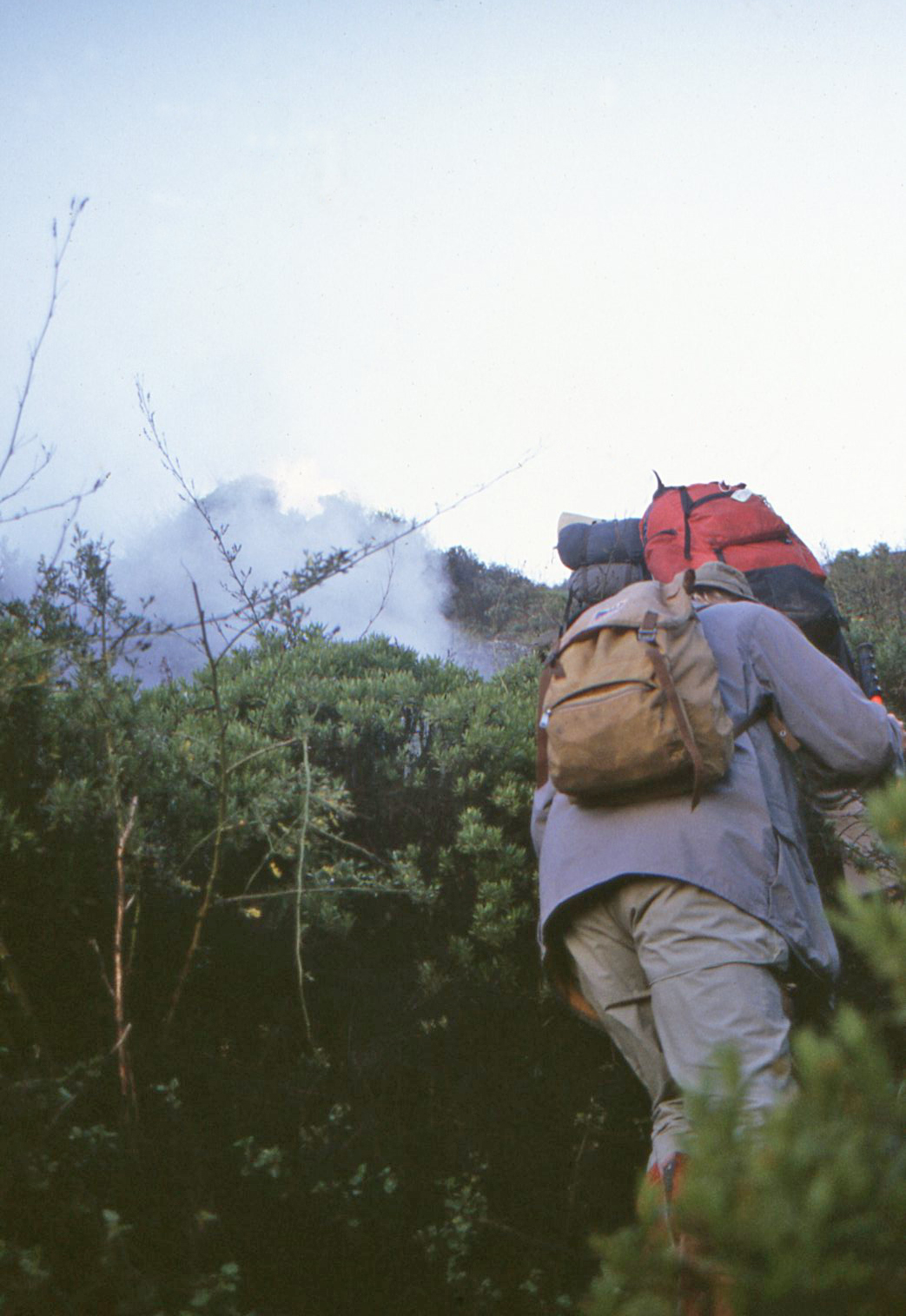
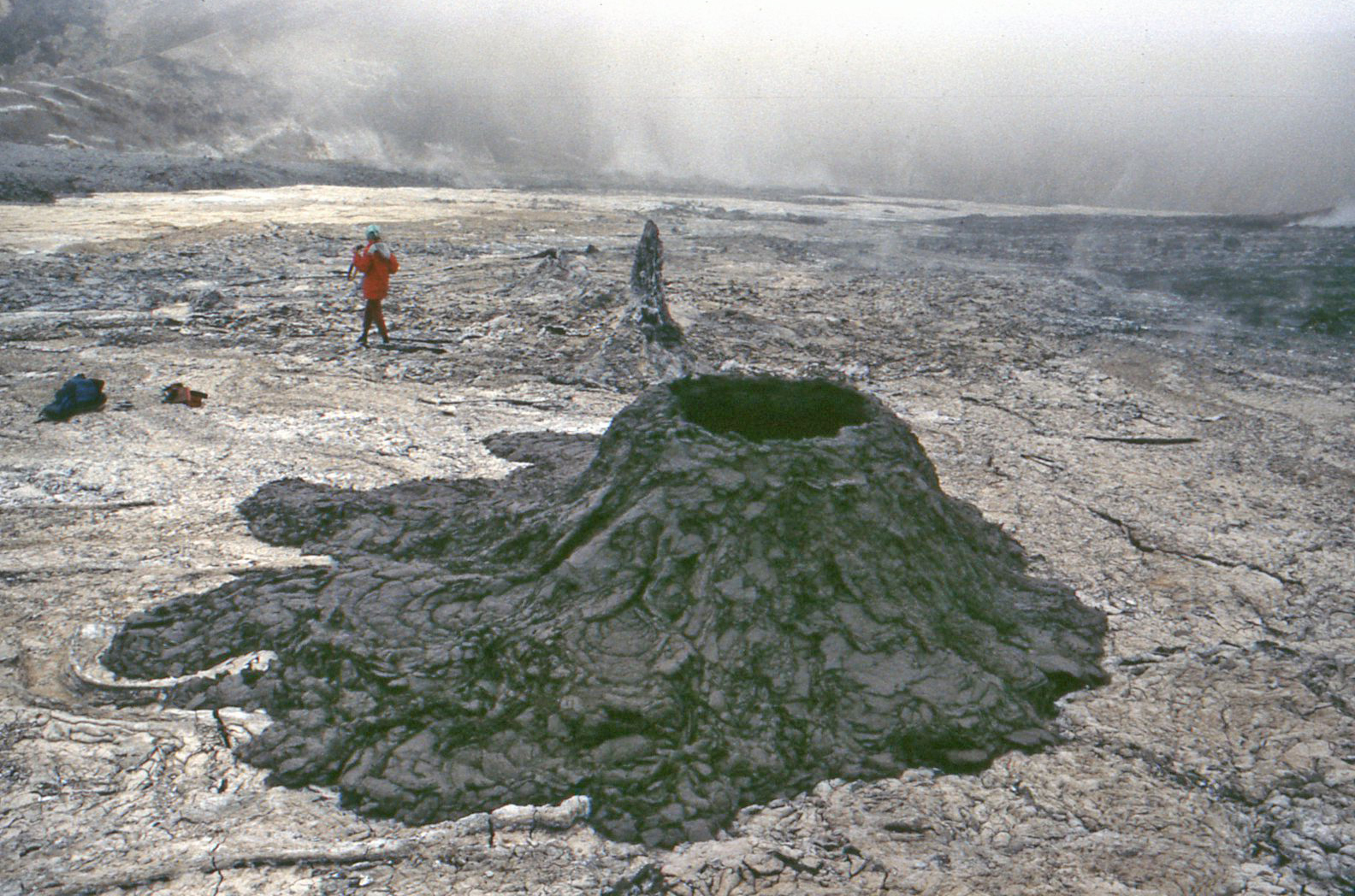
JenniBarclay (@VolcanoJenni)
Barry Dawson taught me while I was an undergrad at Edinburgh University… he was pretty inspiring and treated us all with kindly respect. Leading by example.
Gianna Garda
It was a great pleasure to meet Professor Barry Dawson in Perth (Western Australia) in 1993. He suggested I go to Sydney to carry on experimental work for my Ph.D. thesis on mafic dykes from the southern coast of São Paulo (Brazil).
Pingback: Barry Dawson Memorial |
fieme.com
You ought to take part in a contest for one of the most useful websites on the internet.
I most certainly will highly recommend this blog!
Pingback: One year of volcanicdegassing | volcanicdegassing
Pingback: Conference Diaries: VMSG Meeting 2014 | Between a Rock and a Hard Place
Obat kuat pria yang permanen
Thank you very much for the information , very fortunate to be able to visit a nice and useful articles like this, the success of our greetings